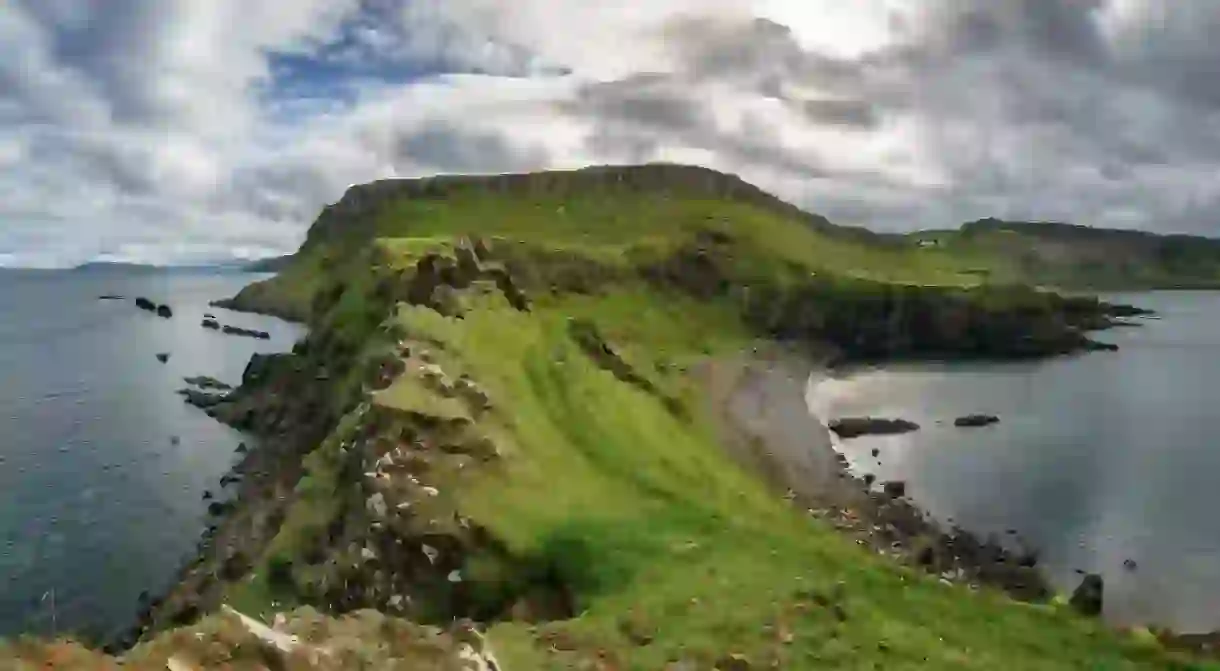Giant Dinosaur Footprints Newly Discovered on the Isle of Skye

Home to dolphins, whales, pine martens and red deer, the Isle of Skye in Scotland is no stranger to remarkable creatures. Better still, researchers on Skye just stumbled across a new site embellished with around 50 enormous prehistoric dinosaur footprints from some 170 million years ago.
Thought to be the oldest dinosaur fossils ever discovered in Scotland, the tracks were unearthed in a tidal area at Rubha nam Brathairean or Brothers’ Point, a beauty of a headland that basks on Skye’s Trotternish peninsula.
Experts have since disclosed that the footprints, embedded into a mucky, shallow lagoon area, consist primarily of two types of dinosaur from the Middle Jurassic Period: sauropods and theropods. Some of these ginormous prints even amount to the size of a car tyre.
https://www.instagram.com/p/BhGxPf9nWoF/?taken-by=bbcnews
Deemed ‘globally important’ by scientists, this groundbreaking discovery was conducted by researchers at the University of Edinburgh, Staffin Museum and the Chinese Academy of Sciences and published in the Scottish Journal of Geology.
It provides priceless insight into a formerly elusive period of dinosaur evolution and builds upon the dinosaur print findings discovered on Skye in 2015. Fossil sites from the Middle Jurassic Period are a rarity across the globe, making this unearthing more significant than ever.
Although various factors like weathering, tidal conditions and landscape changes made some of the prints and trackways tricky to decipher, the clearest footprints were marked by sauropods and theropods.

Similar to the Brontosaurus, four-legged sauropods were graced with extraordinarily long necks and small heads, ate a plant-based diet and stood up to two meters (6.5 feet) tall at the hip. As early cousins of the Tyrannosaurus rex, bipedal theropods had reduced forelimbs and razor-sharp teeth suited to their meat-eating mentality.
The journal states that this proves certain dinosaurs also inhabited shallow waters like lagoons: ‘This new site strengthens the inference, originally based on a previously discovered locality near Duntulm Castle in northern Skye, that sauropods habitually spent time in lagoons during the Middle Jurassic.’

Dr Steve Brusatte, field team leader from the University of Edinburgh’s School of GeoSciences, told the BBC: ‘The more we look on the Isle of Skye, the more dinosaur footprints we find.’
He then went on to add: ‘This new site records two different types of dinosaurs – long-necked cousins of Brontosaurus and sharp-toothed cousins of T-Rex hanging around a shallow lagoon, back when Scotland was much warmer and dinosaurs were beginning their march to global dominance.’













